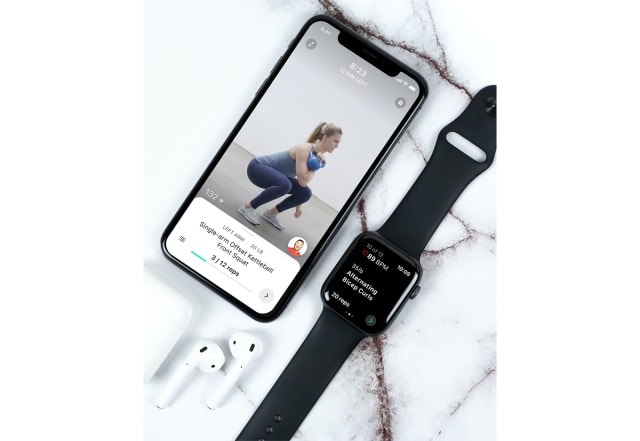That was why I was initially drawn to Future. After I signed up, I was asked to choose a personal trainer. The app offers an array of choices with a short bio for each person. I decided on Ashley, mostly because she and I share an alma mater. Shortly thereafter, she contacted me via the app, and we arranged a FaceTime video call to review the plan. Then, over the video call, I laid out my goals along with a list of various injuries that might make certain exercises more difficult than others. For her part, she wanted to know what kind of equipment I had at home so that she could send me the right workouts. I told her I owned some dumbbells, a yoga mat, a foam roller and a Peloton bike, and she said that was perfectly fine to start.
One nice perk of the Future service is that every member is offered an Apple Watch Series 3 as a loaner for the duration of their membership. You’d put down a deposit of $200, which you would then get back if you decide to cancel. Alternately, you could pay the difference between the deposit and the watch’s retail price to purchase it outright.
The reason Future offers the Apple Watch is because that’s the primary way in which Future trainers keep track of whether you’re working out, and how well you’re doing. I already had an Apple Watch Series 5, so I opted out of the offer.

Future
After the call, Ashley began sending me workout routines via the app. A typical workout session would include a brief warm-up followed by several minutes of exercises and then stretching or foam rolls. Each routine has an accompanying video instruction as well as a pre-recorded voice guide. Every once in a while, Ashley would add in some verbal encouragement or a few tips on how to keep proper form as well. After each workout, Ashley gets to see my heart rate levels (thanks, Apple Watch), and I have the option of leaving her some feedback on how I think it went.
It was a little rough-going at first. I couldn’t do some of the workouts she assigned (jumping jacks were a little tough due to plantar fasciitis, for example) and the routines were sometimes almost an hour long, which was a little much for me. After some discussion, she agreed to shorten the routines to about 30 minutes, but to have more of them throughout the week (so instead of three times a week, it would be four). She also modified the workouts to better suit my needs, such as knee push-ups instead of regular ones, and an overall emphasis on low-impact workouts that are much better for the aforementioned plantar fasciitis.
On top of that, Ashley would message me constantly, either to remind me of my workouts, or to ask me why I skipped a particular day. There were days when, despite feeling ragged with exhaustion, I would still squeeze in a workout because I didn’t want Ashley to guilt-trip me the following morning.



